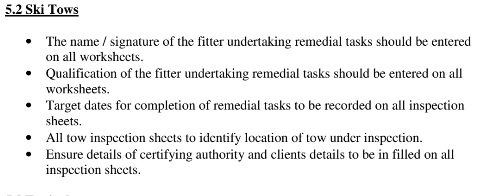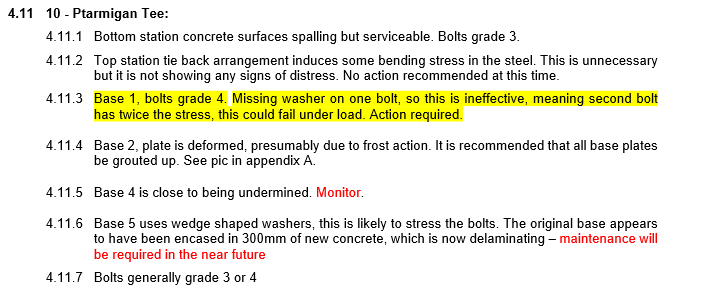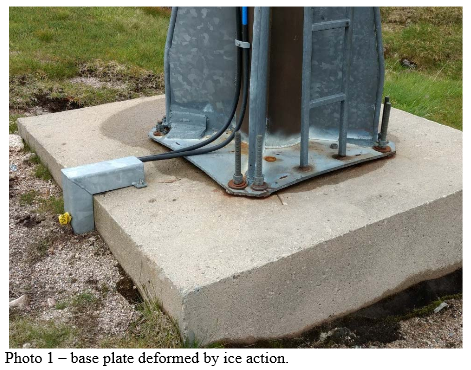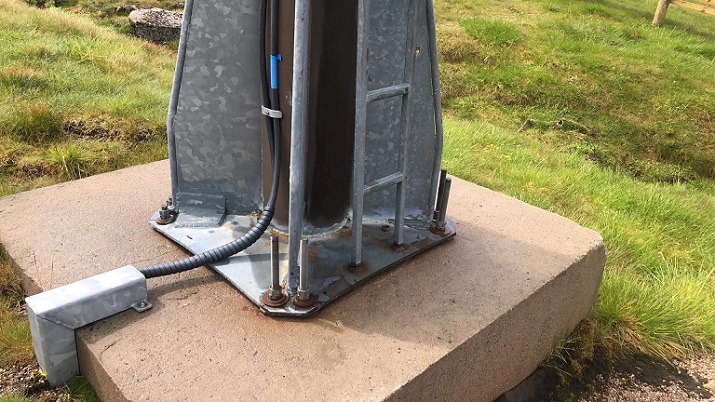This post takes a further look (see here) at the ongoing mismanagement of health and safety at Cairn Gorm.

After concerns about the safety of the lift infrastructure at Cairngorm Mountain were raised by a member of the public in 2018 the Health & Safety Executive (H&SE) visited and issued three Improvement Notices. The Inspectors (“they”) also noted:
![]()
Subsequently HIE released the following statement:

Note the third paragraph, second sentence “improvements to be made to the current arrangements for recording all maintenance work to all Cairngorm tows”. This was not a new issue:

The above was not the only comment in the report recommending improvements to the way maintenance work should have been recorded at Cairngorm Mountain.
In the “Annual report and financial statements for the period ended 31/03/2020” for Cairngorm Mountain Scotland Ltd (CMSL), the Highlands and Islands Enterprise subsidiary that runs the ski business, Mr. P. Mearns, the chair of the board of directors claimed:

Let’s compare that statement with the following photographs taken in the summer 2020:

It can be seen that this work has just been completed as there is very little water marking and no green algae on the blocks! It also shows poor workmanship in that galvanised steel should have been the preferred option for the framework, but at the very least this could have been painted with a suitable metal paint rather than just left to corrode!
The interesting fact, however, is this particular pylon had previously been mentioned in reports by a firm called ADAC Structures dated 16/11/2015, 22/12/2016 and from 20/07/2017. This comment comes from the last report:

Para 4.11.3. raises the question was this bolt fixed or did it subsequently fail resulting in the remedial work in the first photo?
The next photos are of Ptarmigan Tow, Pylon 2, which is first mentioned in the ADAC Structures report of 20/07/2017:-
Para 4.11.4.“Base 2, plate is deformed, presumably due to frost action. It is recommended that all base plates are grouted up. See pic. In appendix A”


That base plate is clearly in very poor condition judging by the number of welds, the angle iron welded on to an upright and the stains which form when untreated steel rusts! The long lengths of studding left above the double nut arrangement are also a safety risk to anyone working on that pylon!
Because there are no reports in the public domain after 20/07/2017 we do not know whether the work highlighted in red in paras in 4.11.5 and 4.11.6 (above) has been undertaken, but one thing is certain, the Ptarmigan tow is in a very dilapidated state possibly even needing full refurbishment!
A new Freedom of Information request will be sent to HIE for the latest inspection reports and I will update this post when I have that information but it is clear that the safety of the lift infrastructure at Cairn Gorm is still far from sorted.
Two questions that need to be answered
(1) Have any of the directors of CMSL actually walked around the ski area that they control, especially in the summer when all the maintenance and repairs are exposed, before signing off accounts that claim Health and Safety is taken seriously? And,
(2) would you use the Ptarmigan tow in its current condition?
More to follow!

Given the ongoing safety and associated maintenance issues associated with tow equipment and the dilapidated state of building structures, walls etc., maybe it is lucky for CMSL that Cairngorm Mountain was unable to operate this winter. Now that snow is depleting and winter is coming to an end, it is time for a complete overhaul of safety and safety management at Cairngorm Mountain. HSE needs to waken up and prioritise a detailed inspection as soon as the ground conditions permit.
As pointed out, The CMSL directors need to start taking safety much more seriously and not just window dress the issue in Board meeting reports. As someone who spent decades managing operations which required a high standard of safety management, I know that unless you regularly visit workplaces and objectively observe and question safety management on the ground, it is the managers (or directors) who can be deemed liable, or even negligent, in the event of a serious accident. Board safety reports are meaningless unless the directors have visited and critically questioned what is happening on the ground. Board directors need to start to make regular and unannounced visits to the Mountain to satisfy themselves that safety is being taken seriously at working level.